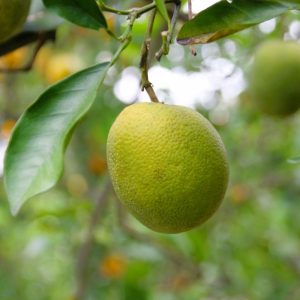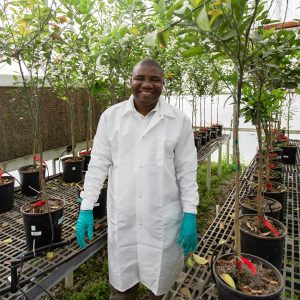The long effort to help huanglongbing (HLB) impacted citrus trees in Florida has taken another step forward. The disease, commonly known as citrus greening, greatly impacts tree root health, fruit development, and juice quality. A study at the UF/IFAS Citrus Research and Education Center (CREC), examined the relationship between fertilization, root health, and fruit yield. Specifically, researchers focused on Valencia orange trees with HLB. Dr. Davie Kadyampakeni, associate professor in the UF/IFAS department of soil, water, and ecosystem sciences, led the effort.

The study, spanning multiple years and sites, had several goals. It aimed to assess changes in root density, understand HLB dynamics concerning root growth, and evaluate the impact of varied fertilization on fruit yield and juice quality.
“We wanted to test whether enhanced macro and micronutrient levels would restore root health and improve overall tree performance,” Kadyampakeni explained. “Roots play a pivotal role in nutrient absorption and overall tree vitality, so would the different nutrient inputs, in the face of HLB, rehabilitate the root health?”
The study involved ‘Valencia’ orange trees planted in 2012 and 2013. The macronutrients used were potassium, magnesium, and calcium. The micronutrients were zinc, manganese, iron, and boron. Those were applied through the soil or the trees’ foliage. The team used soil core samplers and minirhizotrons for root sampling and monthly root growth assessments.
Results

Root growth patterns revealed fluctuations linked to citrus tree physiological processes. Growth peaked during seasons when the trees showed new shoot growth, flower formation, and fruit formation. Interestingly, the study observed a significant negative correlation between root growth and fruit yield. This suggests a trade-off influenced by the HLB-affected environment.
“Fruit yields were optimized with elevated micronutrients, particularly through soil application,” Kadyampakeni said, “emphasizing the role of nutrient availability in promoting root growth and fruit yield.”
The study also highlighted site-specific responses, indicating the need for customized fertilization approaches. Fruit yield differences were more pronounced at the CREC Ridge site in Lake Alfred. There, soil fertilization of micronutrients significantly outperformed foliar application.
While the change in fertilization did not impact juice quality, total soluble solids (TSS) differed between the two sites. TSS were higher on the Ridge compared to the citrus grove of the southwest Flatwoods near Clewiston, FL suggesting that not one size fits all.
“The correlation between root health and fruit yield shed light on the complex factors in HLB-affected citrus trees,” Kadyampakeni pointed out.
Path Forward
This research adds to the understanding of root dynamics in HLB-affected environments. It also suggests that tailored fertilization strategies may lessen the impact of this harmful citrus disease and prolong the productive life of bearing citrus trees.
“These findings are another step closer to helping Florida citrus growers who are facing Huanglongbing in their groves,” Kadyampakeni said. “I hope it offers them hope for more sustainable and resilient citrus production soon.”
This study did not look at the economic feasibility of operating such a fertilization program. He recommends looking at that over a long-term period to see how it would impact growers.
The research was published in the journal HortScience. You can read the full article here: https://journals.ashs.org/hortsci/view/journals/hortsci/58/12/article-p1498.xml
The Citrus Research and Development Foundation provided funding for the Huanglongbing research.
 2
2
